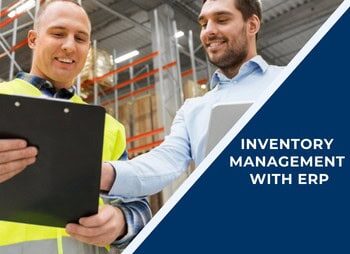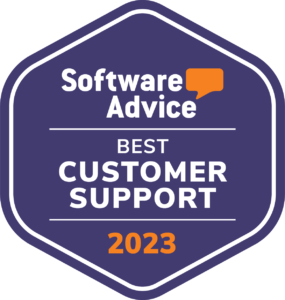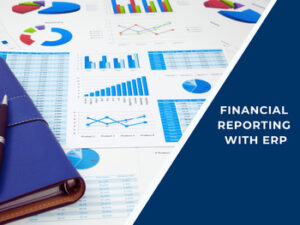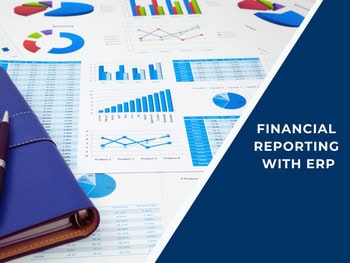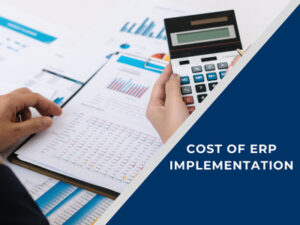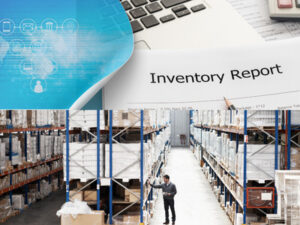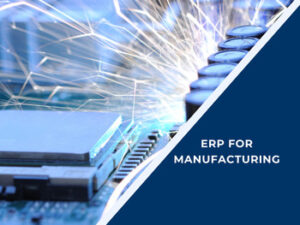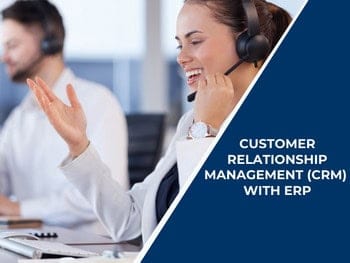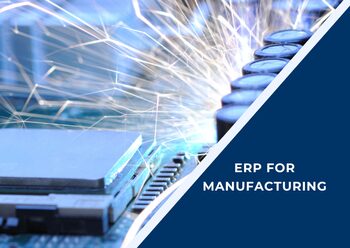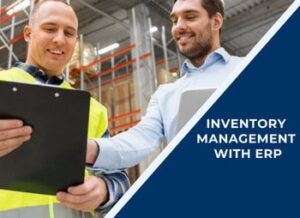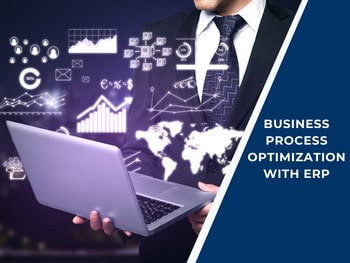Inventory Management with ERP
Inventory Management with ERP
What is the Meaning of Inventory Management with ERP?
Inventory management refers to the process of tracking and controlling a company’s stock, including raw materials, work-in-progress goods, and finished products. ERP systems integrate inventory management into a unified platform, connecting it with procurement, sales, and finance modules.
For example, when stock levels drop below a set threshold, the ERP system can automatically trigger purchase orders, ensuring seamless operations without stockouts or overstocking.
What Are the Advantages and Disadvantages of Inventory Management with ERP?
Advantages
- Centralized Data: Real-time visibility into stock levels across multiple locations.
- Automation: Reduces manual tasks like inventory counting and reorder management.
- Demand Forecasting: Advanced analytics predict stock requirements, preventing overstocking or shortages.
- Cost Savings: Minimized wastage and improved resource allocation.
Disadvantages
- High Initial Costs: ERP implementation requires significant investment.
- Complex Setup: Customizing the system to fit specific business needs can be challenging.
- Learning Curve: Employees need adequate training to use ERP tools effectively.
What Are the Benefits of Inventory Management with ERP?
- Accurate Stock Levels: ERP systems provide precise inventory tracking, ensuring accurate stock counts.
- Improved Efficiency: Automation streamlines inventory processes, reducing errors and saving time.
- Better Decision-Making: Access to real-time data enables strategic decisions about procurement and stocking.
- Enhanced Customer Satisfaction: Timely order fulfillment improves customer trust and loyalty.
Conclusion
ERP systems have transformed inventory management, providing businesses with tools to optimize stock levels, streamline operations, and enhance customer satisfaction. Despite the challenges of implementation, the benefits of ERP far outweigh the drawbacks, making it an invaluable asset for modern businesses. With the right ERP solution, companies can achieve greater efficiency and competitiveness in today’s demanding market.
Sales Order Processing with ERP
Sales Order Processing with ERP
Sales order processing is a critical component of a business’s operations, involving the management of customer orders from initiation to fulfillment. Traditional order processing methods often involve manual tasks, leading to inefficiencies and errors. ERP systems have changed the game, making it easier and more efficient to manage sales orders automatically.
What is the Meaning of Sales Order Processing with ERP?
Sales order processing refers to the steps involved in receiving, tracking, and fulfilling customer orders. When integrated with an ERP system, this process becomes automated and streamlined, connecting sales with inventory, shipping, and accounting modules.
For example, an ERP system can automatically check inventory levels when an order is placed, ensuring the product is available and initiating the shipping process immediately.
What Are the Advantages and Disadvantages of Sales Order Processing with ERP?
Advantages
- Streamlined Workflows: Eliminates manual data entry, reducing errors.
- Faster Fulfillment: Real-time data ensures quicker order processing.
- Enhanced Visibility: Provides a clear view of order status for all stakeholders.
- Integration: Links sales orders to inventory, finance, and CRM modules.
Disadvantages
- Complex Implementation: Customizing ERP for unique order processes can be challenging.
- Cost: While there is a high initial investment in software and training, the long-term ROI makes it a worthwhile expense.
- System Reliance: Dependence on ERP can cause issues if the system encounters downtime. However, investing in cloud ERP solutions significantly reduce this risk by offering reliable uptime, data redundancy, and seamless access from anywhere.
What Are the Benefits of Sales Order Processing with ERP?
- Improved Customer Experience: Faster order processing leads to higher customer satisfaction.
- Better Decision-Making: Data insights help in optimizing order fulfillment strategies.
- Reduced Errors: Automation minimizes mistakes in order entry and tracking.
- Scalability: Supports growing businesses by handling increased order volumes seamlessly.
Conclusion
ERP systems have redefined sales order processing, making it faster, more accurate, and integrated across business functions. By investing in the right ERP solution, businesses can streamline order workflows, enhance customer satisfaction, and scale operations efficiently.
Explore related tools and articles
Financial Reporting with ERP
Financial Reporting with ERP
Accurate and timely financial reporting is essential for any business to monitor performance, meet compliance requirements, and make informed decisions. However, traditional financial reporting methods can be time-consuming and error-prone. ERP systems simplify this by centralizing financial data and automating reporting processes.
What is the Meaning of Financial Reporting with ERP?
Financial reporting with ERP involves using integrated software to generate comprehensive reports on financial performance. ERP systems consolidate data from various departments, offering a unified view of the organization’s finances. Additionally, ERP solutions provide Key Performance Indicators (KPIs) to track and measure critical financial metrics, ensuring businesses can monitor performance and make informed decisions efficiently.
What Are the Advantages and Disadvantages of Financial Reporting with ERP?
Advantages
1. Real-Time Insights: Immediate access to up-to-date financial data.
2. Automation: Reduces manual errors in financial reporting.
3. Compliance Support: Built-in tools for adhering to regulatory standards.
4. Customizable Reports: Tailored reporting to suit specific business needs.
Disadvantages
1. High Costs: Advanced ERP systems can be expensive.
2. Complexity: Employees require training to use financial reporting tools effectively.
3. Data Migration Challenges: Transferring legacy financial data to ERP can be resource-intensive.
What Are the Benefits of Financial Reporting with ERP?
1. Enhanced Accuracy: Automated calculations reduce errors.
2. Time Savings: Faster report generation allows more focus on strategy.
3. Better Transparency: Provides a clear picture of financial health to stakeholders.
4. Improved Decision-Making: Data-driven insights for strategic planning.
Conclusion
ERP systems make financial reporting more efficient, accurate, and insightful. Businesses leveraging ERP for financial management can enjoy streamlined operations, improved compliance, and enhanced decision-making capabilities.
Explore related tools and articles
Supply Chain Integration with ERP
Supply Chain Integration with ERP
A well-integrated supply chain is vital for businesses aiming to remain competitive. It ensures seamless coordination between procurement, manufacturing, inventory, and distribution. ERP systems play a key role in achieving supply chain integration by providing a unified platform that connects all these processes.
What is the Meaning of Supply Chain Integration with ERP?
Supply chain integration involves aligning and linking all components of the supply chain to work cohesively. With an ERP system, businesses can synchronize supply chain activities, improving communication and collaboration among suppliers, manufacturers, and distributors.
What Are the Advantages and Disadvantages of Supply Chain Integration with ERP?
Advantages
1. Enhanced Visibility: Real-time tracking of inventory, orders, and shipments.
2. Improved Coordination: Streamlines communication between stakeholders.
3. Cost Efficiency: Reduces waste and optimizes resource utilization.
4. Demand Forecasting: Predictive analytics help in planning for future demand.
Disadvantages
1. High Setup Costs: Implementation can be expensive for smaller businesses.
2. Dependency on Accuracy: Data inaccuracies can disrupt the entire supply chain.
3. Complexity: Requires meticulous planning and expert management during setup.
What Are the Benefits of Supply Chain Integration with ERP?
1. Streamlined Operations: Integrated systems reduce delays and inefficiencies.
2. Better Customer Service: Faster order fulfillment leads to higher satisfaction.
3. Scalability: Supports growing supply chain complexities as the business expands.
4. Risk Management: Identifies potential bottlenecks and risks in advance.
Conclusion
ERP systems enable businesses to integrate and streamline their supply chain processes effectively. By ensuring real-time visibility and better coordination, ERP solutions help businesses reduce costs, enhance efficiency, and stay competitive in an ever-changing market.
Explore related tools and articles
Customer Relationship Management with ERP
Customer Relationship Management (CRM) with ERP
Customer Relationship Management (CRM) focuses on building and maintaining strong relationships with customers. By integrating CRM with ERP systems, businesses can achieve a unified view of customer interactions, enabling more personalized and efficient service.
The Role of ERP in CRM
While a standalone CRM system focuses solely on customer interactions, an ERP system integrates multiple business processes, including finance, inventory, sales, and operations. By combining CRM with ERP, businesses gain a unified platform that bridges customer-facing functions with backend operations, creating a seamless flow of information across departments.
Benefits of CRM with ERP Integration
1. Enhanced Data Visibility
Integrating CRM with ERP ensures that customer data is no longer siloed. Sales, customer service, and support teams can access real-time data, such as order history, payment status, and inventory availability, enabling them to provide informed and timely assistance to customers.
2. Streamlined Processes
With CRM-ERP integration, businesses can automate processes like order management, invoicing, and customer service. This reduces manual errors, saves time, and improves operational efficiency.
3. Improved Customer Experience
Having access to a customer’s complete history allows businesses to personalize interactions, anticipate needs, and offer tailored solutions. This leads to higher customer satisfaction and loyalty.
4. Informed Decision-Making
Integrated systems provide comprehensive analytics and reporting capabilities. Businesses can track key metrics, identify trends, and make data-driven decisions to improve customer engagement and overall performance.
5. Scalability and Flexibility
As businesses grow, their needs evolve. CRM-ERP systems are scalable, making it easier to adapt to increased customer demands and operational complexities.
Key Features of CRM in ERP Systems
- Customer Database Management: Centralized storage of customer contact details, purchase history, and preferences.
- Sales Automation: Streamline sales processes, from lead generation to closing deals.
- Customer Support: Efficiently manage support tickets and track resolution timelines.
- Marketing Campaigns: Plan, execute, and track the success of marketing campaigns.
- Analytics and Reporting: Gain insights into customer behavior, sales trends, and performance metrics.
Real-World Applications of CRM with ERP
1. e-Commerce: Personalize shopping experiences by tracking customer preferences and purchase history.
2. Manufacturing: Improve customer satisfaction by providing accurate delivery timelines and resolving issues quickly.
3. Nonprofits: Track donor contributions, manage fundraising campaigns, and build lasting relationships with volunteers and stakeholders.
4. Distribution: Optimize order management, track delivery schedules, and ensure accurate inventory levels to meet customer demands effectively.
Conclusion
By integrating CRM and ERP, businesses can create a seamless and efficient customer experience, build stronger relationships, and drive sustainable growth.
Key Takeaways:
- CRM and ERP integration provides a 360-degree view of customers.
- Streamlines order fulfillment and improves customer service.
- Enables data-driven decision-making for enhanced customer satisfaction.
- Increases sales and revenue through personalized interactions.
- Improves operational efficiency and reduces costs.
- Builds stronger customer relationships and drives business growth.
Explore related tools and articles
ERP for Manufacturing
ERP for Manufacturing
Manufacturing businesses face unique challenges, including resource management, production planning, and quality control. ERP systems are specifically tailored to address these needs, helping manufacturers optimize operations and stay competitive.
What is the Meaning of ERP for Manufacturing?
ERP for manufacturing integrates production planning, inventory management, quality assurance, and other manufacturing functions into a single system. It provides end-to-end visibility, enabling businesses to manage resources efficiently.
What Are the Advantages and Disadvantages of ERP for Manufacturing?
Advantages
- Real-Time Monitoring: Tracks production progress and resource usage.
- Improved Quality Control: Ensures adherence to standards through integrated checks.
- Reduced Downtime: Predictive maintenance features minimize disruptions.
- Enhanced Scalability: Adapts to changing production demands.
Disadvantages
- Complex Customization: Manufacturing-specific needs may require extensive tailoring.
- Initial Costs: High setup and training expenses.
- Implementation Time: Requires careful planning and execution.
What Are the Benefits of ERP for Manufacturing?
1. Resource Optimization: Efficient allocation of raw materials and labor.
2. Improved Decision-Making: Access to real-time data aids strategic planning.
3. Increased Productivity: Automation reduces manual intervention, speeding up processes.
4. Better Supplier Collaboration: Streamlined communication with suppliers .
Conclusion
ERP systems are indispensable for manufacturing businesses, offering tools to optimize production, enhance quality, and drive efficiency. By adopting the right ERP solution, manufacturers can navigate industry challenges and achieve sustained growth.
Explore related tools and articles
Business Process Optimization with ERP
Business Process Optimization with ERP
What is an ERP System?
ERP, or Enterprise Resource Planning, refers to software solutions designed to manage and integrate various business functions like finance, human resources, inventory, and customer relationships.
ERP Definition and History
At its core, ERP consolidates disparate systems into a unified platform, enabling seamless data flow across departments. The concept originated in the 1960s with material requirements planning (MRP) systems for manufacturing. Over time, ERP solutions evolved to include additional business functions, becoming a cornerstone for organizational efficiency.
Features of ERP systems include:
- Centralized data management
- Modular design tailored to specific needs
- Real-time reporting and analytics
- Automation of routine tasks
The Role of ERP in Business Process Optimization
ERP systems are designed to streamline and standardize processes across an organization.
Process Integration
An ERP solution eliminates silos by integrating data from all departments, ensuring consistency and accuracy. For example, inventory data flows seamlessly into sales and procurement, reducing redundancy and errors.
Automation and Efficiency
ERP software automates routine tasks, such as invoice processing and payroll management, freeing up resources for strategic initiatives.
Real-Time Insights
With built-in analytics, ERP systems provide actionable insights, enabling businesses to make data-driven decisions and respond swiftly to market changes, and enhance customer satisfaction.
Advantages and Disadvantages of ERP Systems
Advantages
- Increased Efficiency: Automation minimizes manual tasks and reduces errors.
- Enhanced Collaboration: A centralized system fosters better communication across departments.
- Scalability: ERP solutions grow with the business, adapting to increased demands.
- Regulatory Compliance: ERP systems often include features to meet legal and industry standards.
Disadvantages
- High Initial Costs: Implementation and customization can be expensive.
- Complexity: ERP systems require significant time and expertise to set up and maintain.
- Training Requirements: Employees need comprehensive training to use ERP software effectively.
Benefits of Implementing ERP Solutions
Investing in ERP systems yields substantial long-term benefits.
- Streamlined Operations: ERP consolidates processes, reducing duplication and inefficiencies.
- Improved Decision-Making: Real-time data enhances strategic planning.
- Cost Savings: Automation and optimization reduce operational costs.
- Enhanced Customer Satisfaction: Faster response times and accurate order fulfillment build trust and loyalty.
Challenges in ERP Implementation
Implementing an ERP system is not without challenges:
- Resistance to Change: Employees may be hesitant to adapt to new systems.
- Customization Issues: Tailoring ERP solutions to fit unique business needs can be complex.
- Data Migration: Transferring data from legacy systems to ERP software requires meticulous planning.
Overcoming Challenges
Organizations can effectively address these challenges through a multi-faceted approach. This includes meticulous planning that considers the specific needs and goals of the organization. Furthermore, comprehensive training programs are essential to equip employees with the necessary skills and knowledge to navigate the evolving environment. Finally, engaging experienced implementation partners can provide valuable guidance and support throughout the process, ensuring a smooth and successful transition. By implementing these strategies, organizations can minimize implementation challenges, ensuring a successful system rollout, and delivering improved efficiency, productivity, and a greater return on investment.
Conclusion
ERP systems play a pivotal role in business process optimization by integrating and automating workflows. Despite challenges in implementation, the benefits of ERP—such as improved efficiency, cost savings, and data-driven decision-making—make it an indispensable tool for businesses. As technology advances, ERP solutions will continue to evolve, offering even greater potential for process optimization.

